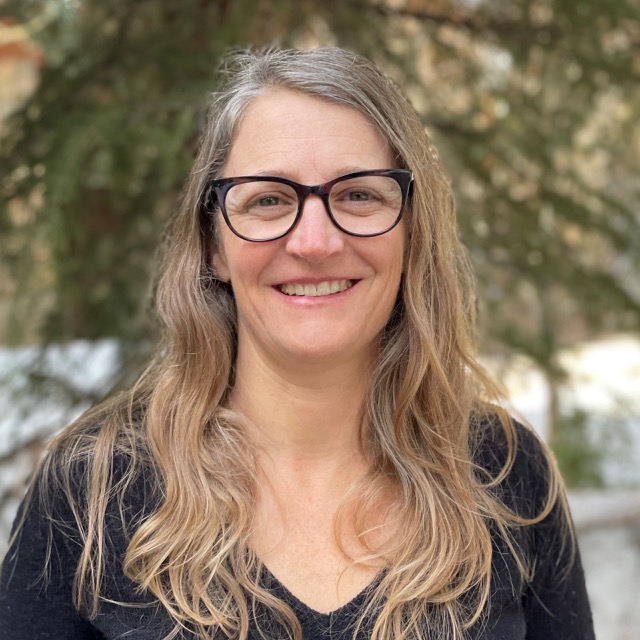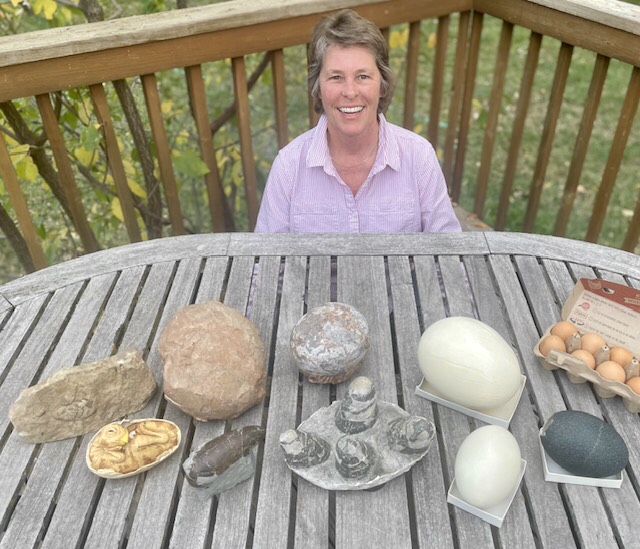CRMS invites you to be an osprey host
reprinted from The Sopris Sun, June 22, 2022
by Max Seitel-Hayes ’24
If you’ve been along Highway 82 by El Jebel and Basalt or driven 133 through Carbondale, you’ve probably seen these majestic beauty perched in massive nests atop a lamppost, power pole, bridge or other tall structures. Though not social with humans, ospreys certainly take advantage of our infrastructure. They have a striking white head and brown wings and feed on fish in our local rivers.
But the osprey was not always this prevalent in the Valley. In the mid-20th century, the agricultural chemical dichlorodiphenyltrichloroethane (DDT) was used across the United States as an easily-manufactured insecticide and had a severe impact on the avian population in North America. DDT causes the shells of bird eggs to be weak and leads to a premature hatch. As DDT worked its way up the food chain, from plants to rodents, all the way to birds of prey, avian populations began to plummet. Certain birds, including the osprey, almost went extinct before DDT was banned in 1972.
In recent decades, ospreys have made a comeback in the Roaring Fork Valley, but some new problems have emerged. Many natural nesting sites have been destroyed by booming development. The ospreys have responded by nesting on made-man structures, such as power poles. These sites are dangerous to the ospreys, with their nests often blowing away, or some animals even getting electrocuted.
In 2017, a Colorado Rocky Mountain School (CRMS) biology class led by teacher Kayo Ogilby came up with a solution to this problem. They took it upon themselves to build a safer nesting site for the ospreys. Their plan went into action after the class received news of an osprey nest falling off a local power pole. The nest blew off the pole multiple times, and it was obvious that the ospreys needed a better nesting location.
The CRMS biology class, with aid from Xcel Energy, installed a new nesting site on CRMS property near the Crystal River. The new site is far away from dangerous infrastructure, and it is built in a way that protects the nest from blowing off.
Five years later, that project has been a massive success. The same pair of ospreys have come back to the nest, and 12 chicks have been born. All of this has also been caught on camera with the CRMS Osprey Cam, accessible at www.crms.org/academics/osprey-camera/
Since that original project, the Roaring Fork Valley’s osprey population has continued to increase, but new development of housing and infrastructure has continued to take away safe nesting sites. Ogilby and current biology students realized that “one nest was not enough to help the population truly recover in our valleys.”
So, once again, they’ve come to the rescue. In a conversation with Caleb Imhoff, a member of Ogliby’s class, he said, “The osprey population has been increasing after the DDT incident, and we need to help the ospreys find better nesting sites to make sure that they have safe homes, not a nest balancing on an electrical pole.”
Similar to the 2017 project, but now even bigger, Ogibly’s class wants to install multiple new nesting sites in the Valley.
Students already proposed their plan to the Pitkin Board of County Commissioners and, through the Pitkin County Healthy Rivers Program, they received a $4,800 grant toward the project. This money funds the purchase of materials for the nests and their eventual installation, which will require heavy machinery.
“Our mission is to sequentially install nesting boxes on poles to provide suitable nesting habitat that is no longer naturally available,” said Ogilby. “We decided to start with four boxes, initially, and the grant we were awarded by Pitkin County Healthy Rivers provides the funding to tackle this project.”
Students from the class have already built nest boxes with four wooden sides, a wire-fence bottom, and an open-top. Now, in an effort to find local landowners willing to host a nesting box, the class has created social media posts about their project on the CRMS Instagram account. They also created an online form for anyone interested in hosting (linktr.ee/coloradorockymountainschool). A digital map keeps track of the distribution of possible nesting sites, to make sure they are spread out evenly throughout the Valley.
During this project, the class collaborated with Mary Harris of the Roaring Fork Audubon Society, birder Nancy Peterson, local writer, and landscape designer Geneviève Joëlle Villamizar and Holy Cross Energy.
To host a nest, you must have a specific type of property: near the river and surrounded by natural nest-building materials such as grass, bark, and vines. The property must also be accessible to heavy machinery but distanced from highways or electrical infrastructure.

The nest set up by CRMS in 2017 has brought a pair of Ospreys to a safer zone, and since then 12 chicks have been born. The nest rests inside a wood palette that protects it from blowing away. The pole to the right of the nest houses the CRMS Osprey Cam. Photo by George Soukup ’24
 MYCRMS
MYCRMS
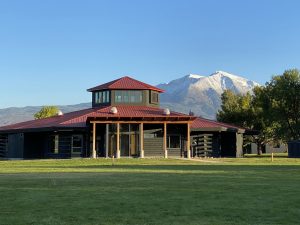
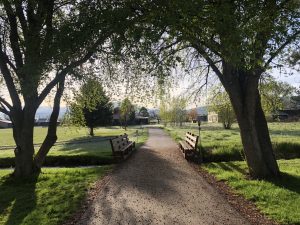
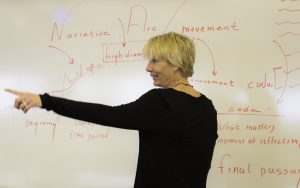
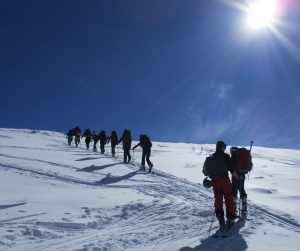

 Virtual Tour
Virtual Tour